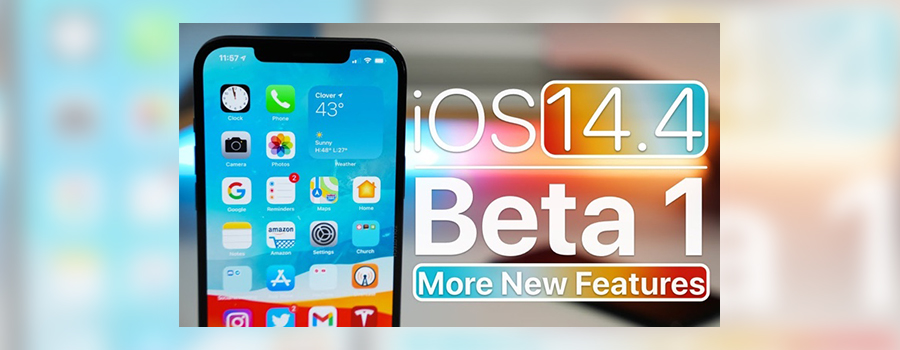
Quantum Technology
24th February 2021
About iOS 14.4
4th March 2021Augmented reality technology has seen immense growth in the last few years and it will grow in the future as well. Commercial use of the AR technology has surged due to its use by tech giants including Microsoft, Apple, Google, Facebook, and Amazon. According to research, the market for AR technology is worth $10 billion. Implementing augmented reality technology into your mobile app will bring desired business results. But before that, it’s worth exploring the different trends that drive the augmented reality market. By the end of 2021, AR devices were estimated to rise to 600 million units and are projected to grow to 1.75 billion by 2025.
Introduction to Augmented Reality
Augmented reality applies a modest approach by layering digitally created elements over the real world. This is possible through the use of wearable devices, like glasses or headsets that display a digital image onto the lens. AR users are provided a digital service; they can walk around and interact with the physical world while still viewing digital elements.
Top Trends of Augmented Reality in 2021
1. AR in Sports Events
Many reputed sports events are implementing AR technology to ensure the audience enjoys from their premises. As we know, with event cancellations due to the COVID-19, the entertainment sector is investing in Augmented Reality App Development to find ways to drive income with AR sports events. In the sports world, AR devices are used to broadcast in-stadium experiences.
2. AR in Education
One of the major challenges of the education industry, in addition to remote learning, is expenses. Students are missing their valuable time due to COVID-19 and with no appropriate planning, it is becoming more hectic. Similarly, some schools can’t provide learning opportunities as they need expensive equipment. But with the availability of mobile devices and integration of AR technology, this concern can be addressed. Students can use AR to explore science projects, historical lessons, and in many cases, it can also supplement field trips.
3. AR in Healthcare
To deal with COVID-19 it becomes crucial to have social distancing and it is the biggest reason for the implementation of new technology and advancements. Even in healthcare, in hospitals, medical schools, and doctor’s clinics, AR can benefit patients and doctors alike. From helping in finding a vein to improving diagnoses is massive. Not only AR assist doctors, but it also helps in the case of an emergency by providing information.
4. AR in Gym
People are facing difficulty when performing and indoor version of their workout, on a treadmill or stationary bike. While many Gym and fitness centers already offer AR experiences via screens that create an outside environment and it will grow even more. For runners, augmented reality app developers have developed apps integrated with AR experience while running outdoors. Many other features are also available visible to runners and cyclists including speed and distance records.
5. AR in Tourism
The extreme popularity of AR technology has impacted the tourism industry as well. With AR technology, exploring popular tourist sites will become a dynamic experience. Smartphone apps and augmented reality devices will give museums and historic sites the experience to learn everything they ever wanted with a quick scan. Imagine visiting the Rome monuments and seeing them through an AR display. As augmented reality trends, the tourism industry is the most popular AR use case.
Once you are aware of the SDK benefits to build your AR mobile app, it is important to check the top-rated tools. We consider them as the most relevant and appropriate depending on the features.
Top SDK for AR Mobile App Development
Once you are aware of the SDK benefits to build your AR mobile app, it is important to check the top-rated tools. We consider them as the most relevant and appropriate depending on the features.
1. Vuforia
Vuforia is a renowned SDK to build AR applications for mobile platforms. It uses computer vision technology to identify and track 3D objects. It is fully compatible with android, iOS, and other Unity Editor Platform. It is present in both free & paid versions with a customization in features.
2. Unity
Unity is a strong competitor to other AR/VR/MR SDK tools in use today and provides advanced game engines. The best part is Mobile App Development Company using Unity to create plugins and SDKs.
3. Kudan
Kudan is based on SLAM technology to localize a sensor in relation to its surroundings. This maps the 3D structure of the surrounding area. SLAM is integrated with any camera or sensor with accuracy.
4. EasyAR
EasyAR is present in both a free and pro version. This SDK has a feature to simultaneously identify and track different 3D objects in real-time. Other advantages that make its first choice for mobile app development include the absence of watermarks and no time restrictions.
Maxst has a huge reputation in the world of fashion, publication, travel & leisure, and advertising world. It has several products for users like image processing, AR games and Augmented Reality tours. It has Cloud recognition and SLAM support for the developers.





